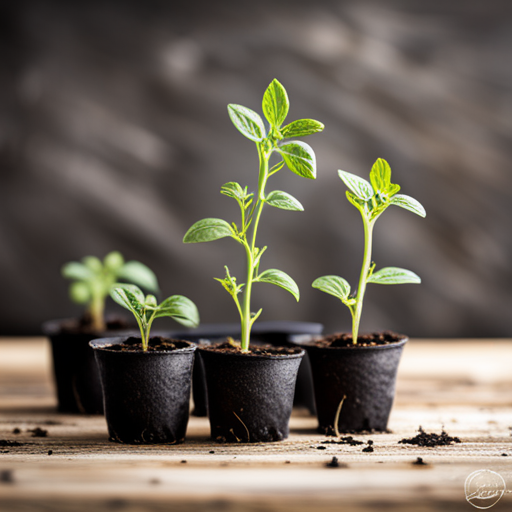
Starting vegetable seeds indoors gives gardeners a head start on the growing season. It allows plants to develop strong roots before being transplanted outdoors. However, knowing the right time to start seeds indoors depends on your planting zone. Timing is critical to ensure seedlings are ready when the weather warms up. This guide explains when to start vegetable seeds indoors for each zone to maximize your spring harvest.
Understanding Planting Zones
The USDA Plant Hardiness Zone Map divides the United States into zones based on average annual minimum temperatures. Zones range from 1 (coldest) to 13 (warmest). Knowing your zone helps determine planting dates and seed-starting schedules. Warmer zones allow earlier planting, while colder zones require later starts due to frost risk.
Zones 3-4: Short Growing Seasons
Gardeners in Zones 3 and 4 experience short growing seasons with late frosts. Start vegetable seeds indoors 6-8 weeks before the last frost date. For most areas, this means starting seeds in early March to mid-March. Cold-hardy vegetables like broccoli, kale, and cabbage can be started earlier, around late February. Tomatoes and peppers need more warmth, so start them indoors by mid-March.
When transplanting, wait until after the last frost, typically in late May to early June. Harden off seedlings by gradually exposing them to outdoor conditions before planting.
Zones 5-6: Moderate Growing Seasons
Zones 5 and 6 offer slightly longer growing seasons, making them ideal for a variety of vegetables. Start seeds indoors 6-8 weeks before the last frost date. In these zones, the last frost often occurs in mid-to-late April. For cool-season crops like lettuce, spinach, and peas, start seeds indoors in mid-to-late February.
Warm-season vegetables, including tomatoes, peppers, and eggplants, should be started indoors by early March. Begin hardening off seedlings in mid-April and transplant them outdoors once the soil warms and frost risk passes.
Zones 7-8: Mild Winters and Early Springs
Gardeners in Zones 7 and 8 enjoy mild winters and early springs. Start seeds indoors 6-8 weeks before the last frost date, which typically falls in mid-to-late March. Cool-season vegetables like broccoli, cabbage, and lettuce can be started as early as January.
For warm-season crops, such as tomatoes and peppers, start seeds indoors by late February. Most vegetables can be transplanted outdoors by mid-to-late March, giving gardeners an extended growing period.
Zones 9-10: Long Growing Seasons
Zones 9 and 10 offer long growing seasons with minimal frost risk. Start seeds indoors 6-8 weeks before the last frost, which typically occurs in late January to early February. Cool-season vegetables, including spinach, carrots, and kale, can be started in December.
Warm-season crops like tomatoes, squash, and cucumbers can be started indoors in January and transplanted outdoors by mid-February. Gardeners in these zones often plant multiple crops throughout the year, maximizing harvests.
Zones 11-13: Year-Round Growing Seasons
In Zones 11-13, frost rarely occurs, allowing year-round gardening. Start seeds indoors based on desired planting times rather than frost dates. For cool-season vegetables, start seeds in late fall or early winter to transplant outdoors during mild winter months.
Warm-season vegetables can be started indoors as early as December for planting in January. Continuous planting and harvesting cycles are possible, so staggered seed starting ensures steady production.
Tips for Starting Seeds Indoors
Regardless of zone, following proper seed-starting practices ensures healthy seedlings. Use seed trays or containers with drainage holes to prevent waterlogging. Fill containers with a light, well-draining seed-starting mix. Keep soil moist but not soggy, and maintain consistent temperatures based on each plant’s needs.
Provide ample light using grow lights or a sunny windowsill. Most seedlings require 12-16 hours of light daily. Rotate trays to prevent plants from leaning toward light sources. Fertilize seedlings with a diluted liquid fertilizer once they develop their first set of true leaves.
Harden Off Seedlings Before Transplanting
Before moving seedlings outdoors, harden them off to prepare for outdoor conditions. Begin by placing them outside in a shaded area for a few hours each day, gradually increasing exposure to sunlight and wind. This process should last 7-10 days to reduce transplant shock.
Happy Seed Starting!
Starting vegetable seeds indoors helps gardeners in all zones prepare for a successful growing season. By following the recommended seed-starting schedules based on your zone, you can ensure plants are ready to thrive when moved outdoors. With proper preparation, including hardening off seedlings, you will enjoy a bountiful harvest throughout spring and summer. Whether you garden in colder zones or enjoy year-round planting, timing and care make all the difference for healthy, productive vegetables.
Please be sure to check out my Gardening Blog Post Page for more tips on all types of gardening. Including Seed Saving, Seed Starting, Orchids, Water Gardening, Coldframe Gardening, Indoor Bulb Gardening, Hydroponics, Container Gardening, Mums, Herbs, African Violets, planting Bulbs, Flower Gardening, Vegetable and Fruit Gardening, Indoor Houseplants of all kinds, Cactus, Succulents, Hanging plants, Deer resistant plants and even Bird, Bee, Butterfly and Hummingbird Gardens!
